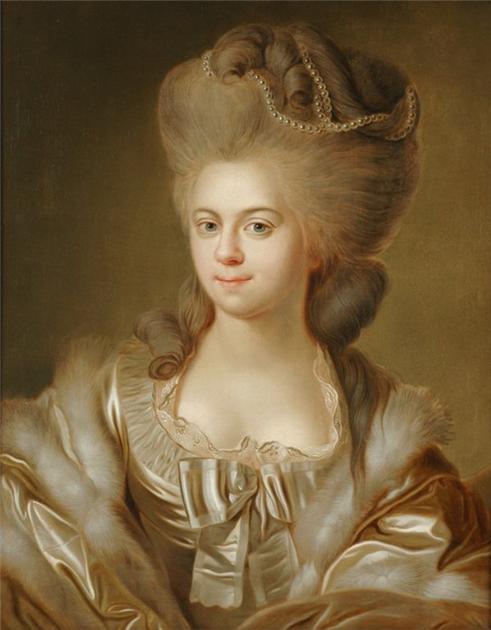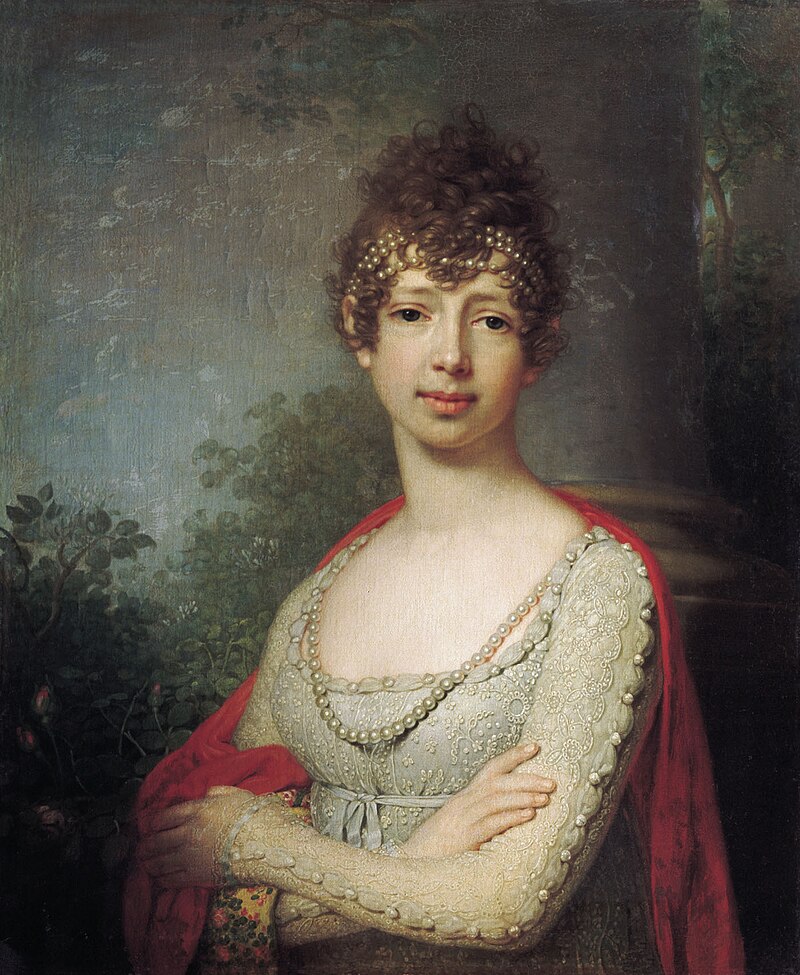© Unofficial Royalty 2025

Elisabeth of Württemberg, Archduchess of Austria; Credit – Wikipedia
February 18, 1478 – Execution of George Plantagenet, Duke of Clarence, who opposed his brother King Edward IV of England, in the Tower of London; buried at Tewkesbury Abbey in Gloucester, England
In 1478, George was tried for treason against his brother King Edward IV and privately executed in the Tower of London.
Unofficial Royalty: George Plantagenet, Duke of Clarence
February 18, 1516 – Birth of Queen Mary I of England at the Palace of Placentia (Greenwich Palace), in Greenwich (London), England
Excluding the disputed reigns of Empress Matilda in the 12th century and Lady Jane Grey, Mary’s predecessor, Queen Mary I was the first queen regnant of England. Mary was the only child of King Henry VIII of England and his first wife Catherine of Aragon to survive infancy. Upon the death of her half-brother King Edward VI of England in 1553, John Dudley, 1st Duke of Northumberland and Lord Protector of the Realm arranged for his daughter-in-law Lady Jane Grey, a great-granddaughter of King Henry VII of England, to be proclaimed Queen of England instead of Mary. Mary quickly assembled a force and deposed Jane, who was ultimately beheaded. Mary was 37 and needed to marry and produce an heir to supplant her Protestant sister, the future Queen Elizabeth I of England. In 1554, Mary married the future King Philip II of Spain but the couple had no children. Throughout her reign, Mary was steadfast in her determination to restore the Roman Catholic religion to England. During her reign, Edward VI’s religious laws were abolished and nearly 300 Protestants were burned at the stake for heresy. Mary had become weak and ill in May 1558, possibly from ovarian cysts or uterine cancer. In November 1558, she fell ill during an influenza outbreak and died at the age of 42. Mary wanted to be buried with her mother at Peterborough Cathedral but was buried in Westminster Abbey in a vault she would eventually share with her Protestant sister Elizabeth.
Unofficial Royalty: Queen Mary I of England
February 18, 1712 – Death of Louis, Duke of Burgundy, Le Petite Dauphin, son of Louis, Le Grande Dauphin and grandson of King Louis XIV of France, at the Château de Marly in France; buried at the Basilica of St. Denis near Paris
Louis, Duke of Burgundy was the eldest of the three sons of Louis, Dauphin of France and Maria Anna Victoria of Bavaria. At the time of his birth, Louis’ grandfather Louis XIV was King of France and his father was the heir apparent to the French throne. After Louis’ birth, his father was called Le Grand Dauphin and his son Louis, who was second in the line of succession, was called Le Petit Dauphin. However, King Louis XIV outlived his son and his grandson and was succeeded by his five-year-old great-grandson King Louis XV when he died in 1715.
Unofficial Royalty: Louis, Duke of Burgundy, Le Petite Dauphin
February 18, 1790 – Death of Elisabeth of Württemberg, Archduchess of Austria, first wife of the future Emperor Franz I of Austria; buried at the Imperial Crypt in Vienna, Austria
Elisabeth was the first of the four wives of Emperor Franz I of Austria. At the age of 15, Elisabeth went to Vienna, Austria to prepare to become the bride of Archduke Franz, the nephew of the then Holy Roman Emperor, Joseph II. The Protestant princess was educated by nuns at the Church and Monastery of the Visitation and converted to Roman Catholicism. Elisabeth married Archduke Franz (the future emperor) in 1788 but died at the age of 22 two years later in childbirth after giving birth to a daughter who lived only four months.
Unofficial Royalty: Elisabeth of Württemberg, Archduchess of Austria
February 18, 1802 – Birth of Lord Adolphus FitzClarence at Bushy House in the London Borough of Richmond upon Thames, England
Adolphus was the fifth of the ten children and the third of the five sons of the future King William IV of the United Kingdom and his mistress Dorothea Jordan. He joined the Royal Navy when he was twelve, had a naval career, and attained the rank of Rear Admiral. Fifty-four-year-old Adolphus suffered a paralytic seizure on or a few days before May 17, 1856, and died unmarried on May 18, 1856.
Unofficial Royalty Lord Adolphus FitzClarence
February 18, 1840 – Death of Elisabeth Christine Ulrike of Brunswick-Wolfenbüttel, Crown Princess of Prussia, first wife of the future King Friedrich Wilhelm II of Prussia, in Stettin, Kingdom of Prussia, now Szczecin in Poland; buried in the Chapel of the Ducal Castle of Stettin
In 1765, Elisabeth Christine married her first cousin, Crown Prince Friedrich Wilhelm of Prussia (the future King Friedrich Wilhelm II), in a marriage arranged by their mutual uncle, King Friedrich II (the Great) of Prussia. The couple had one daughter Frederica Charlotte who married Prince Frederick, Duke of York, the second son of King George III of the United Kingdom. Elisabeth Christine’s marriage was never happy, as Friedrich Wilhelm had constant affairs and completely ignored his wife. Elisabeth Christine soon began her own affair and found herself pregnant. Her lover, a musician, was arrested and reportedly beheaded, and Elisabeth Christine took some drugs to end her pregnancy. Her marriage ended in divorce and she spent the rest of her life under house arrest. She never saw her daughter Frederica again. Elisabeth Christine died on February 18, 1840, at the age of 93, after spending 71 years under house arrest.
Unofficial Royalty: Elisabeth Christine Ulrike of Brunswick-Wolfenbüttel, Crown Princess of Prussia
February 18, 1932 – Death of former King Friedrich August III of Saxony at Sibyllenort Castle in Sibyllenort, Germany, now Szczodre, Poland; buried in the Wettin Crypt at the Dresden Cathedral in Dresden, Saxony, Germany
Friedrich August began his military career at age 12, entering the Saxony Army as a second lieutenant, and serving with various regiments over the next 27 years before his accession to the throne in 1904. In 1891, he married Archduchess Luise of Austria, Princess of Tuscany, and they had seven children. However, the marriage was not happy. The marriage quickly broke down, as Luise was unwilling to conform to the strict protocols of the Saxony court, and Friedrich August failed to stand up for her or support her. She began an affair with their children’s tutor and caused quite a scandal. Friedrich August’s father threatened to have her interned at a mental asylum in 1902, which led to Luise fleeing the country while pregnant with their youngest child. The marriage ended in divorce, by royal decree of King Georg in 1903. Friedrich August III was the last King of Saxony, abdicating on November 13, 1918, at the end of World War I. Friedrich August retired to Sibyllenort Castle in Lower Silesia (now Poland) where he lived the rest of his life. He died there on February 18, 1932, after suffering a stroke.
Unofficial Royalty: King Friedrich August III of Saxony
February 18, 1947 – Death of Joachim Ernst, Duke of Anhalt at the Soviet NKVD Special Camp No. 2, the former Buchenwald concentration camp in Weimar, East Germany, now in the German state of Thuringia; his remains were thrown into a mass grave
Joachim Ernst was the last Duke of Anhalt. He came to the throne in September 1918 when he was 17 years old. As he was underage, his father’s brother Prince Aribert of Anhalt served as Regent. With the German Empire crumbling at the end of World War I, Aribert abdicated on Joachim Ernst’s behalf on November 12, 1918. Joachim Ernst married twice. His first marriage was to actress Elisabeth Strickrodt at Ballenstedt Castle in 1927. The marriage was morganatic and lasted only two years. In 1929, Joachim Ernst married Edda-Charlotte von Stephani-Marwitz. They had five children. Joachim Ernst spent his post-abdication life at Ballenstedt Castle, where he raised his family and became a trained agricultural and forestry farmer. Always at odds with the Nazis, he was arrested in 1944 and imprisoned at the Dachau Concentration Camp for three months. He was arrested again in September 1945, this time by the Soviets, and was sent to the NKVD Special Camp No. 2 at the former Buchenwald Concentration Camp. The former Duke of Anhalt died at the camp on February 18, 1947, and his remains were thrown into a mass grave.
Unofficial Royalty: Joachim Ernst, Duke of Anhalt
February 18, 1947 – Birth of Princess Christina of the Netherlands, daughter of Queen Juliana of the Netherlands, at Soestdijk Palace in the Netherlands
Full Name: Maria Christina
Because her mother contracted German measles while pregnant, Christina was born nearly blind. Medical treatment and glasses improved her vision. In 1975, Christina married Jorge Pérez y Guillermo. Having not received the government’s consent, Princess Christina relinquished her rights to the Dutch throne (as well as for her descendants) and her position as a member of The Royal House. The couple had three children and divorced in 1996. Princess Christina was an accomplished musician, recorded several CDs, and sang at several family events, including the funeral of her mother Queen Juliana. In June 2018 it was announced that Princess Christina was suffering from bone cancer. Princess Christina died at Noordeinde Palace in The Hague, the Netherlands on August 16, 2019, at the age of 72 from bone cancer.
Unofficial Royalty: Princess Christina of the Netherlands
February 18, 1984 – Birth of Princess Stéphanie, Hereditary Grand Duchess of Luxembourg, wife of Guillaume, Hereditary Grand Duke of Luxembourg, born Countess Stéphanie de Lannoy in Ronse, Flanders, Belgium
Full name: Stéphanie Marie Claudine Christine
Both of Stéphanie’s parents come from noble Belgian families. Stéphanie and her siblings all have the rank of Count and Countess in Belgium, as sons and daughters of a Count. Stéphanie first met Prince Guillaume, Hereditary Grand Duke of Luxembourg when they were introduced by friends in Germany eight years before they married. They did not see each other until they met again about five years later and that was when they fell in love. Guillaume proposed to Stéphanie three weeks before their engagement was announced. Unfortunately, Stéphanie’s mother died from a stroke two months before the wedding on October 20, 2012. The couple has two sons. In his Christmas Eve speech on December 24, 2024, Grand Duke Henri of Luxembourg announced that he would abdicate in favor of his eldest son Prince Guillaume, Hereditary Grand Duke of Luxembourg on October 3, 2025. Guillaume and Stéphanie will then become the Grand Duke and Grand Duchess of Luxembourg,
Unofficial Royalty: Stephanie, Hereditary Grand Duchess of Luxembourg
February 18, 2000 – Wedding of Letsie III, King of Lesotho and Anna Karabo Motsoeneng at Setsoto Stadium in Maseru, Lesotho
Anna and King Letsie III were married on February 18, 2000, at Setsoto Stadium in Maseru, the capital city of Lesotho The national sports stadium was filled to its capacity of 40,000 people, with thousands turned away. Bernard Mohlalisi, the Roman Catholic Archbishop of Maseru conducted the marriage ceremony. Guests included The Prince of Wales (now King Charles III), King Mswati III of Swaziland, and Nelson Mandela. King Letsie said Anna would be his only wife, going against the tradition in an area where polygamy is relatively common. After the ceremony, the bride and the groom left for a luncheon amid deafening cheers, singing, and ululation from the crowd. The couple hosted an evening banquet for their guests. After her marriage, Anna was known as Queen Masenate Mohato Seeiso.
Unofficial Royalty: Letsie III, King of Lesotho
Unofficial Royalty: Queen ‘Masenate Mohato Seeiso (Anna Karabo Mots’oeneng)
This article is the intellectual property of Unofficial Royalty and is NOT TO BE COPIED, EDITED, OR POSTED IN ANY FORM ON ANOTHER WEBSITE under any circumstances. It is permissible to use a link that directs to Unofficial Royalty.









